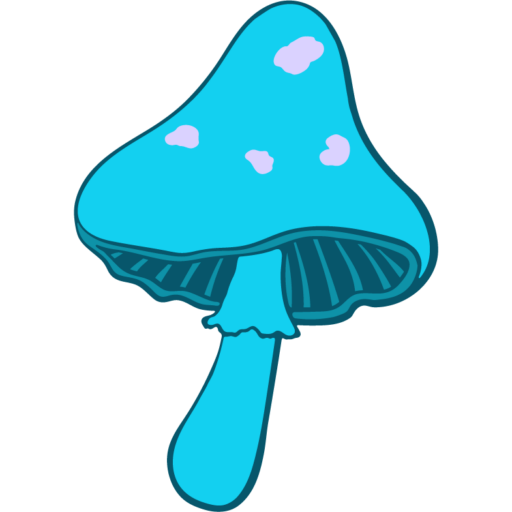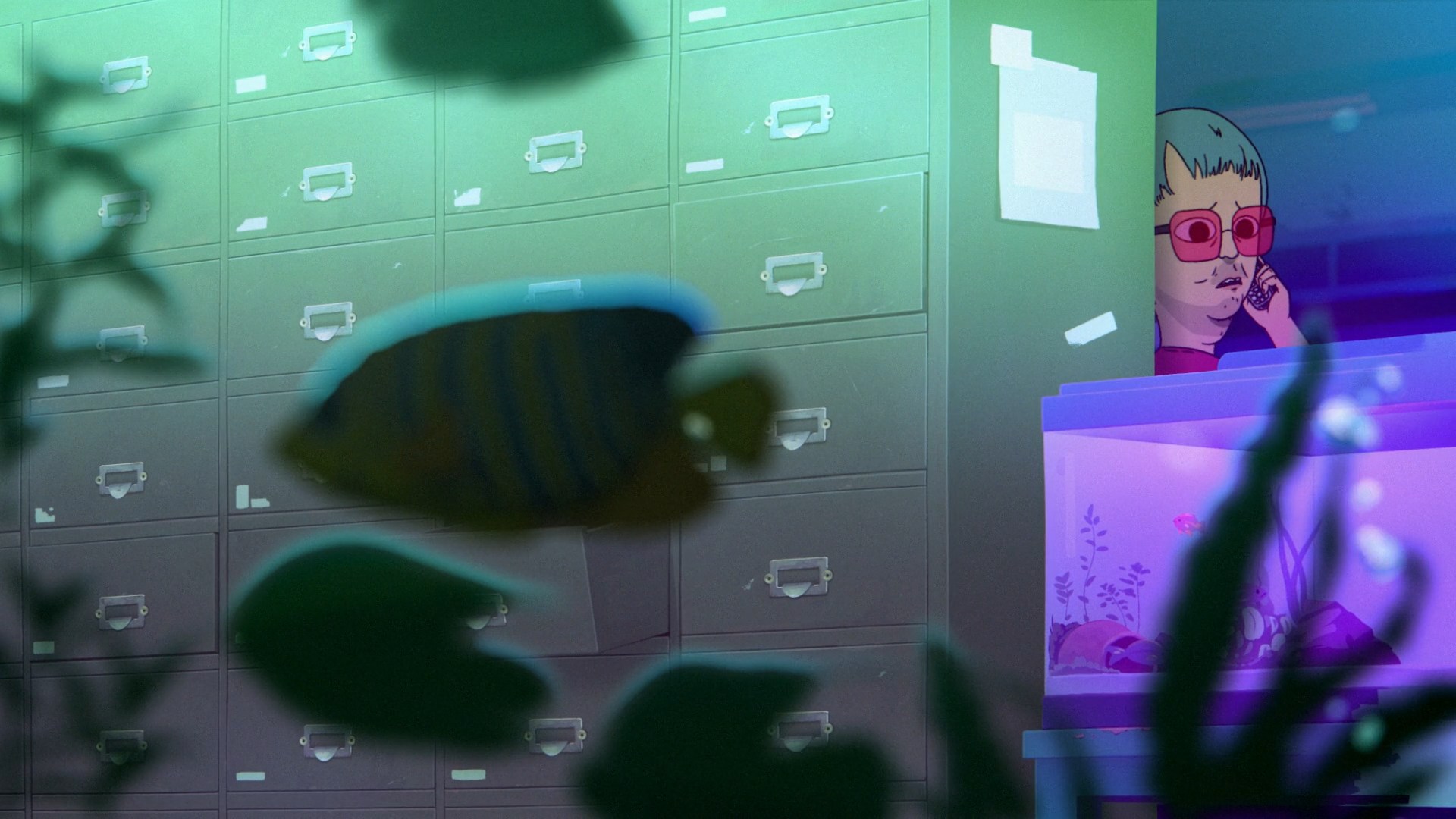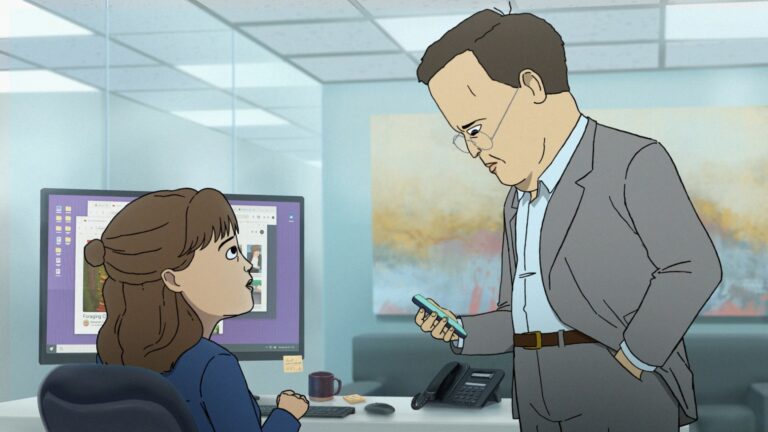Okay, so let’s talk “Common Side Effects.” Specifically, let’s talk about how the show’s wild, rule-breaking color palette isn’t just eye candy — it’s a fully loaded mood ring that controls your feelings before you even realize it. Every time those neon mushrooms glow or the labs go all shadowy and sinister, you’re not just getting a treat for your eyes — you’re getting a secret signal straight to your brain. Yep, the visual high jinks are THAT next-level, and they shape every dose of comedy, every pocket of tension.
Meet the Magician: Wes McClain’s Kaleidoscopic Vision
Blink and you’ll miss another color eruption. It’s not a Photoshop accident. Wes McClain, the art director from Green Street Pictures, sits at the very heart of this visual journey. He’s the guy who once doodled for “The Midnight Gospel” at Titmouse NY, which pretty much means his creative passport’s already been stamped “psychedelic.” In early 2021, Green Street Pictures practically snatched him for “Common Side Effects,” and the whole project’s visual ethos changed overnight.
So, McClain’s biggest play? He ditched safe, naturalistic palettes, pitching a “botanical-neon” approach. Producers bit instantly. In fact, one 2022 writers’ room insider at Bandera Entertainment even joked their first mood board could trigger migraines. But, hey, trippy is better than forgettable. McClain later explained at the 2023 Variety Animation Panel, “We want colors to punch, not soothe. If you’re comfortable, we’ve failed.”
Palette with a Purpose: What’s Really Happening With Those Wild Hues?
Let’s break it down. McClain built Season 1 with what he calls a “triadic base”—electric teal, bruised magenta, mineral orange. It’s not your garden variety primary trio. It creates energy and unease and serves up a color cocktail that says “normal” never once set foot in this show.
But that’s not all. McClain laid out some strict house rules for the crew:
- No pure black anywhere. “I want darkness to feel alive, not empty,” he told AWN in March 2025.
- Deep backgrounds use a coded shade: #0C0C14. This dark blue-violet teases the viewer, like something’s always lurking.
- If a scene feels bland, spike it with a jolt of secondary color. Don’t be shy; it’s “CSE,” not prestige cable.
Every color is a deliberate “side effect.” You think pink is fun? Here it’s electrified, vibrating against grayscale city scenes. And when things turn serious, the hues grow sharp and acidic, like your heartbeat picking up.
Camille Bozec: Painting Emotion With Every Scene
Now, if McClain is the architect, Camille Bozec is the engineer pulling all the levers. She’s CSE’s creative wizard when it comes to mood-driven color. And she’s got zero time for background noise. Every shot’s palette is thoughtfully matched to Marshall’s mind or Frances’s wild plans.
- On hopeful days: Expect ochres, warm greens, honey-light. Comfort food for your eyes.
- When shadows fall: Everything cools and closes in. Steel blue, soggy grays, shadowy teals. Emotions plummet.
- Got tension? You’ll see it coming in amped-up fuchsia or sinister lavender creeping along the walls.
Bozec chatted about this in a 2025 behind-the-scenes feature. “We want the audience to know what Marshall feels, before he says a word. Our colors speak first. We dial warmth and anxiety into the scene’s shadows. That’s how you guide comedy and tension — skip the voiceover.”
Comedy’s Bright Side: Neon, Mushrooms, and Midnight Daisies
Let’s not ignore the comedic candy store offered by all those neon mushrooms. The creators love crushing convention. Trippy dream sequences light up with combos the old Cartoon Network crowd would have squinted at. Day-glo lime for hallucinations. Pulsing magenta and fuchsia for every trauma or breakthrough. Benches sometimes glow up if a plot twist approaches, a trick Bozec cheerfully described as “emotional foreshadowing for color nerds.”
And there’s a pattern here. Humor leans HUMAN, so warmth rules the rebel scenes, the cozy hangouts, the bonkers party flashbacks. The lighting isn’t just warm — it’s celebratory, like someone doused the set in living-room glow.
Corporate World: Clean, Still, and So Cold It Hurts
Step into Reutical Pharmaceuticals HQ, and you could almost smell the bleach through the screen. The palette takes a 180. Out go the honey tones and juicy neons. Stark whites, chrome silvers, and wild amounts of hospital teal take over. Those relentless fluorescents make everything look clinical, clean, and ready for a medical mishap.
Camille Bozec herself laughed in a spring 2025 interview, “We wanted it to feel like you’ll catch something if you spend too long in Reutical. The teal borders on surgical scrub. It’s cold. It’s alien. Even the shadows feel like they’re plotting.”
But, don’t miss the sly acid-green lighting sneaking into water glasses or screen reflections. That color always drops just as the plot is about to twist — the chill before the pharmaceutical storm.
Counter-Culture Hubs: Where Warm Color Feels Like Rebellion
Now, crash back into the rebels’ mishmash lair, and suddenly the world is alive again. The old brick glows. Even the lampshades look like they have a heartbeat. Warm browns, caramel, deep orange — they signal realness, flaws, and messy humanity. Frances becomes the beacon: her hair catches every fiery hue so you know she’s home, in her element, plotting the next anti-corporate exploit.
Steve Hely summed it up in a March Q&A: “The deeper the trouble, the warmer the base. We wanted conviction, not just quirk.” And it works, scene after scene.
Silent Storytelling: Every Background Hints at the Next Plot Swerve
There’s a secret code for eagle-eyed fans. The showrunners admit it: the right purple is pure danger. That slightly bruised tone? Every time it enters the spectrum, the infamously weird Blue Angel Mushroom is hidden in plain view. Fans on r/CommonSideEffects have gotten obsessed, building color logs that track every shift in hue, every change on Marshall’s hoodie, and whatever fresh warning Mr. Socrates the tortoise is flashing on his shell.
The CSE color team encourages this wild guessing game. As Bozec said on social, “Color keeps secrets in this show. The real fun is when fans spot them before we spell it out.”
How the Palette Primes Your Brain
It’s not all for looks and zaps. Camille Bozec leans hard on color psychology. There’s a sly science at play. “Warm makes you trust us, cold makes you tense up — and then we spin it,” she explained to Animation World Network in May.
Here’s how the CSE color team manipulates you without your permission:
- Warmth = Connection: Orange or golden means connection, humor, the rebels getting it together.
- Cool or teal = Corporate anxiety: If the palette turns sickly blue, reach for your popcorn. Trouble’s right around the lab bench.
- Neons = Surreality: Sometimes it’s safe, sometimes it’s a signal that someone’s about to lose their grip.
These colors don’t just decorate the stories; they’re the stories’ invisible narrators.
The Creative Cauldron: Art, Sound, and Story Merge
This is a team sport, not a solo pursuit. Bozec, McClain, and the color crew huddle with writers, directors, and sometimes even sound designers before locking in a final version. Lighting changes ripple through storyboards. A sudden drop in blue may land a gag exactly right or churn audience anxiety ahead of a big plot drop.
Hely spilled one late-night edit tip: “A tense scene flopped in screenings — until we chilled the background blue in post. Reviewers started squirming. That’s color working just as hard as writing.” And that’s the secret sauce.
The Fans Who Crack the Palette Code
Nobody on the net misses a trick. Fans are running spreadsheets, tracking every hoodie color and lipstick shift on Frances. Some even think Socrates the tortoise is a living mood ring. Bozec calls this “a party bonus: fans who decode the show get to see extra jokes nobody else will.”
Add in the theorists who read emotional temperature in scene-matching and you get full-on art detectives. The creators eat it up. Viewers want to play, and CSE hands them a never-ending Easter egg hunt in violet, teal, and hot pink.
Why “Regular” Was Never an Option
Here’s the naked truth: “Common Side Effects” could have gone safe with color. They could have blended bland blues and anyday beiges, hoping good writing would do the heavy lifting. Instead, CSE lets color and light run wild — sometimes leading, sometimes misleading, always intensifying whatever is on screen.
The result? Each episode feels like a science experiment for the senses. One that tests reaction time, mood swings, gut feelings — and all before you realize a single character has even spoken. The palette pulls your strings, coaxes a giggle, or gives you a nervous flutter, way before the punchline or jump-scare lands.
Palette Roulette: Where Your Gut Gets a Say
Colors in CSE don’t hang around in the background. They’re right up front, making you feel everything before your brain can object. Warm lighting says “trust us, laugh here.” Cold teal? That signals “brace for trouble.” Violet or acid-green right before a character acts shady? You just know to sit up straighter.
So next binge, keep your eyes peeled and your jaw ready to drop. “Common Side Effects” isn’t just a trip for the script — it’s a full-spectrum headrush engineered to mess with your brain, coax an extra laugh, and dial up the suspense.
Because, after all, in every scene and shade, CSE makes one thing clear: the side effects are coming for you whether you’re ready or not.




